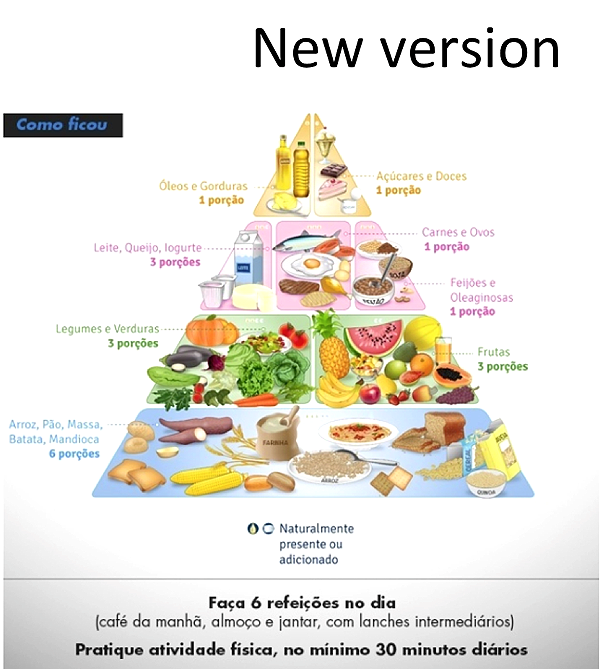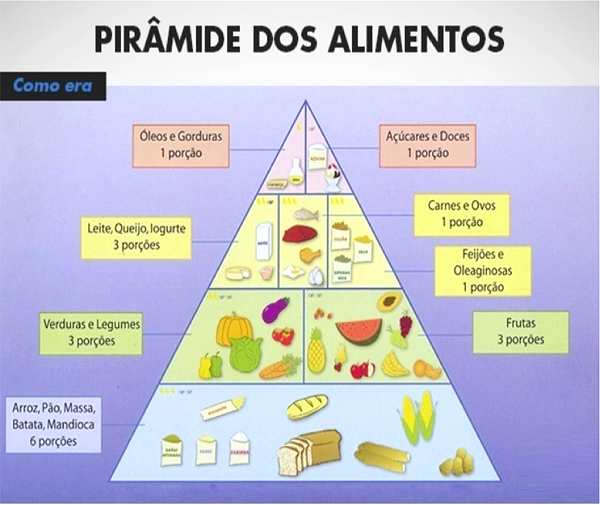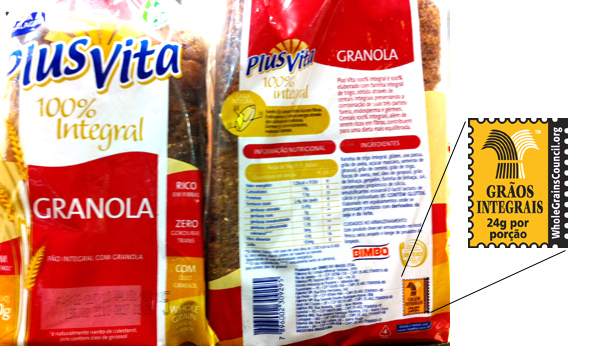Share This
Good news this morning from Brazil. We’ve just heard that the Brazilian Society of Nutrition has unveiled an update of that country’s food pyramid, which now includes whole grain products and breakfast cereals as part of the base of the pyramid. Here’s what the new pyramid looks like:
It’s okay if you don’t speak Portuguese; the pictures speak for themselves. You can see that whole grain bread, crackers, and flour are clearly represented. The plate in the middle, labeled “arroz” definitely looks like brown rice, not white rice, and that little white bowl on the bottom right actually says “quinoa” on it.
The rest of the pyramid is appealing too. (It’s no secret that Oldways, the Whole Grains Council’s parent organization, is a big believer in beautiful pyramids that remind everyone how appealing healthy whole foods can be — our newest versions of the Mediterranea Diet Pyramid, Latin-American Pyramid, African Heritage Diet Pyramid and soon-to-be-released Vegetarian Pyramid all feature yummy lush graphics.) We like that this Brazilian pyramid specifically recommends eating a serving of beans or oilseeds (such as chia, flax) every day, too, though we think good fats (like olive oil) shouldn’t be relegated to the “avoid these” top of the pyramid.
All in all, the new Brazilian pyramid is a big improvement over the old one, seen below:
Oh my! Boring. Not appealing. Looks more like a school lesson than a delicious meal. The sliced bread looks fairly white, and there’s a pale ol’ baguette. That may be some out-of-scale penne pasta (looking whole grain-ish) to the right of the sliced bread, or it may be a pair of old tube socks. Hard to tell; doesn’t look like something I want to run out and eat, anyway. This spare graphic style isn’t as successful as the new one in sending an invitation to savor good food.
We’re delighted that whole grains are getting a big leg up in Brazil with this new food pyramid. Brazil was also one of the first countries in South America to use the Whole Grain Stamp – it was introduced there more than three years ago. Now the Stamp has been approved for use on 80 products in Brazil, putting it in fourth place for use of the Whole Grain Stamp (after the U.S., Canada, and Mexico).
Want to know what products have been approved to use the Stamp in any country? Just visit our Find Stamped Products page, and search by country.
Let’s hear it for “Grãos Integrais” — that’s whole grains, in Portuguese! (Cynthia)




Add a Comment